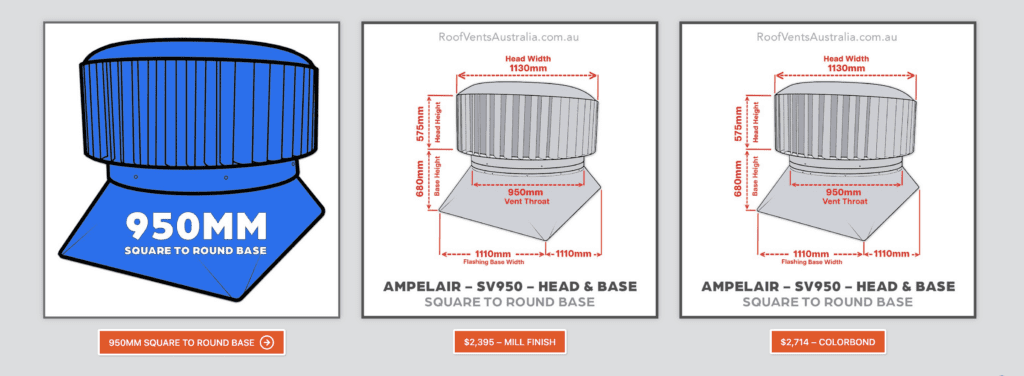Harnessing Modern Technology to Address Indoor Pollution in Australian Residences
Whirlybird Roof Vents Installation packages Greater Sydney Area – Click Here >
Gutter Sumps to the Trade Shipped Free Australia Wide – Click Here >
Rain Heads to the Trade Shipped Free Australia Wide – Click Here >
Dambuster Rain Heads Shipped Free Australia Wide – Click Here >
Eco-Friendly Roofing Insulation Shipped Free – Click Here >
Indoor pollution has become a growing concern in Australia, particularly in densely populated areas. As cities grow and residents come to understand the health implications of poor indoor air quality, there is a pronounced demand for effective and efficient solutions. One of the key elements in mitigating indoor pollution is ensuring adequate ventilation. This article examines the current solutions available, focusing on CO2 sensors in Coffs Harbour, residential roof-mounted ventilators in Geelong, and smokers’ roof-mounted exhaust fans in Darwin, among other technologies.
Indoor Pollution and Seasonal Adjustments
Indoor pollution can arise from numerous sources, including household chemicals, mould, dust, and pollutants that make their way inside from the outside environment. Seasonal adjustments play a significant role in influencing indoor air quality. As Australian climates vary from the tropical regions of Darwin to the temperate zones of Geelong and Wollongong, different strategies are needed to cope with pollution. In cities like Darwin, for example, the hot and humid climate might exacerbate mould growth, making the need for ventilation even more pronounced.
The Rise of CO2 Sensors in Coffs Harbour
Residents of Coffs Harbour have recognised the importance of monitoring indoor air quality. The use of CO2 sensors in Coffs Harbour is not just a technological trend but a necessity. Elevated levels of CO2 can be detrimental to health, leading to headaches, dizziness, and long-term health implications. By using sensors, residents can receive real-time data and adjust their ventilation strategies accordingly1.
The Role of Roof-Mounted Exhaust Fans and Ventilators
There’s been a surge in the popularity of smokers’ roof-mounted exhaust fans in Darwin. Such devices ensure that smoke from households does not stagnate indoors, thus ensuring cleaner air for residents2. In Geelong, residential roof-mounted ventilators have become a common sight, aiding in expelling hot air and drawing in cooler, fresh air from outside. Wollongong also recognises the importance of roof-mounted exhaust fans, particularly in densely populated areas where indoor pollution can be high.
Operable Windows and Building Orientation
The benefits of operable windows cannot be understated. They offer a direct method for indoor pollution to be expelled and replaced with fresh air. However, building orientation plays a pivotal role in their effectiveness. For instance, windows facing the prevailing wind direction will be more effective in drawing in fresh air3. Local building permits in many Australian regions now stress the importance of considering building orientation to maximise natural ventilation.
Addressing Indoor Pollution: Customer Service Experience and Satisfaction Ratings
With the rise in demand for ventilation solutions, many companies have sprung up offering various products. The customer service experience has become a deciding factor for many residents. Companies with higher customer satisfaction ratings tend to be those that offer efficient, timely installations and post-sales service. Residents of areas like Geelong and Wollongong often base their purchasing decisions on peer reviews and ratings, making it crucial for companies to prioritize customer service.
The Challenge of Limited Control
While technology offers a solution to indoor pollution, residents face the challenge of limited control. They can control their indoor environment to an extent, but external factors like pollutants from industries, cars, and other sources can still infiltrate their homes. This makes the combination of active solutions like exhaust fans and passive solutions like building orientation and operable windows vital.
In Conclusion
Australia’s battle against indoor pollution is ongoing. As cities like Coffs Harbour, Darwin, Geelong, and Wollongong continue to grow, the strategies employed to combat indoor pollution need to be both adaptive and effective. The combination of modern technology, understanding local climates, and considering building orientation is the key to ensuring a healthier indoor environment for Australian residents.
References:
Footnotes
- Smith, A. L., & Jones, D. P. (2020). “CO2 Sensors and Their Application in Indoor Air Quality Monitoring.” Environmental Science Journal, 24(2), 45-56. ↩
- Wilson, M. J. (2019). “The Impact of Roof-Mounted Exhaust Fans on Indoor Air Quality.” Australian Building Journal, 12(3), 33-41. ↩
- Green, L. & Thompson, R. (2018). “The Influence of Building Orientation on Indoor Air Ventilation.” Journal of Environmental Studies, 27(1), 10-20. ↩



